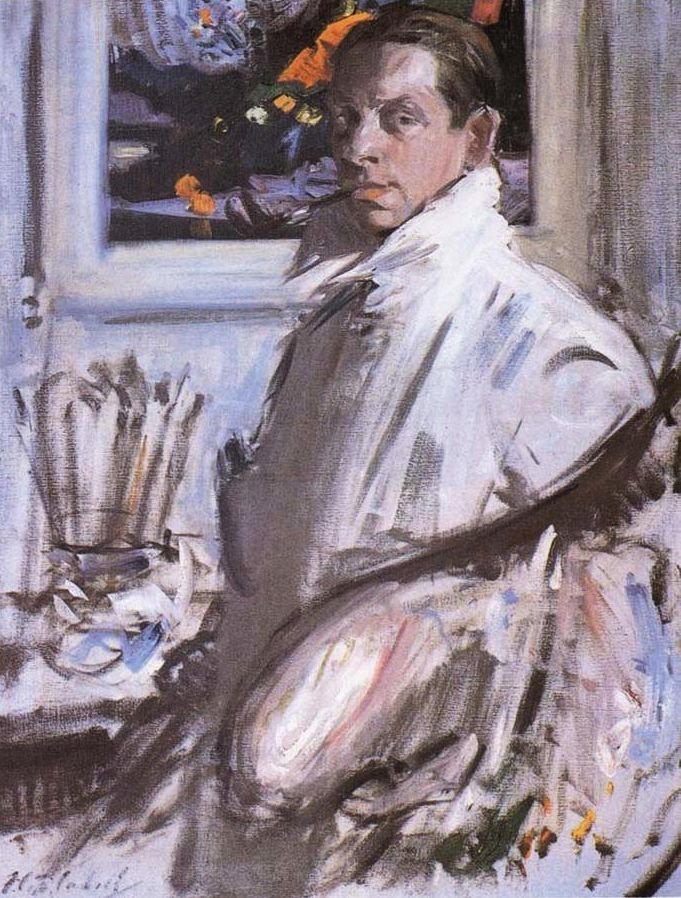

Queer Places:
Académie Julian, Passage des Panoramas, 75002 Paris, France
22 Ainslie Pl, Edinburgh EH3 6AJ, UK
6 Ainslie Pl, Edinburgh EH3 6AR, UK
30 Regent Terrace, Edinburgh EH7 5BS, UK
4 Warriston Cres, Edinburgh EH3 5LE, UK
Dean Cemetery, 63 Dean Path, Edinburgh EH4 3AT
 Francis
Campbell Boileau Cadell RSA (12 April 1883 – 6 December 1937) was a Scottish
Colourist painter, renowned for his depictions of the elegant New Town
interiors of his native Edinburgh, and for his work on Iona.
Francis
Campbell Boileau Cadell RSA (12 April 1883 – 6 December 1937) was a Scottish
Colourist painter, renowned for his depictions of the elegant New Town
interiors of his native Edinburgh, and for his work on Iona.
From October 2011 - March 2012 the Scottish National Gallery of Modern Art held a major solo retrospective of Cadell's work, the first since that held at the National Gallery of Scotland in 1942.[1]
Francis Cadell (pronounced "Caddle")[2] was born in Edinburgh, the son of Dr Francis Cadell FRCSE (1844-1909), a wealthy surgeon[3] and his wife, Mary Hamilton Boileau (1853-1907).[4]
His childhood home was at 22 Ainslie Place[5] on Edinburgh's prestigious Moray Estate, and he was educated privately at the Edinburgh Academy.[6] His sister was Jean Cadell a well-known actress.[7] From the age of 16 he studied in Paris at the Académie Julian, where he was in contact with the French avant-garde of the day. While in France, his exposure to work by the early Fauvists, and in particular Matisse, proved to be his most lasting influence. After his return to Scotland, he was a regular exhibitor in Edinburgh and Glasgow, as well as in London.
Cadell was a left-handed painter. While a student, the President of the Royal Scottish Academy tried to stop him painting with his left hand because 'No artist ever became great who did so.' Cadell swiftly replied 'Sir and did not the great Michelangelo paint with his left hand?' The President did not respond and left the room quickly. A fellow student asked Cadell how he had known that Michelangelo was left-handed. Cadell confessed 'I didn't know but nor did the president.'[7][8]
Cadell spent much of his adult life in Scotland and had little direct contact with many of the new ideas that were being developed abroad. He therefore tended to use subjects and environments that were close at hand – landscapes, fashionable Edinburgh New Town house interiors, still life and figures in both oil and watercolour.[6] He is particularly noted for his portraits of glamorous women whom he painted in a loose, impressionistic manner, depicting his subject with vibrant waves of colour. He enjoyed the landscape of Iona enormously, which he first visited in 1912 and features prominently in his work. During the 1920s he spent several summers with Samuel Peploe, another Scottish Colourist, on painting trips to Iona, and was also friends with the Scottish architect Reginald Fairlie.
Due to his artistic treatment of men, and other details concerning his life, Cadell has been presumed to be gay.[9] Following the death of his close friend and possible lover, Ivor Campbell, in World War I,[10] he enlisted, serving in the 9th Argyll and Sutherland Highlanders and the 9th Royal Scots regiments.[6]
He lived at 6 and 22 Ainslie Place, Edinburgh from 1920-1932.[11][12] During this time he befriended Reginald Fairlie who lived at 7 Ainslie Place and they remained friends thereafter.[13] He then lived at 30 Regent Terrace from 1932-1935 where he found it more and more difficult to sell his paintings because of the economic climate. He finally moved to 4 Warriston Crescent[7][14] where he died on 6 December 1937.[15] He is buried with his family in Dean Cemetery. The grave lies on the southern boundary wall of the main cemetery. Although Cadell failed to make much income from his paintings it would be wholly wrong (as some claim) to say he died "in poverty". As his houses reflect, he was from a very wealthy family, and it is more correct to say he was largely financially supported by his family.
In 1932, Cadell was mugged, and in 1935 was severely injured in a fall from a tram car. He died of cancer in 1937.[16]
Two of his paintings were offered for over £500,000 in 2009.[11]
Cadell's Estate is represented by Portland Gallery, London.[17]
Brodie Castle, Forres, Scotland
Culzean Castle, Scotland
My published books: